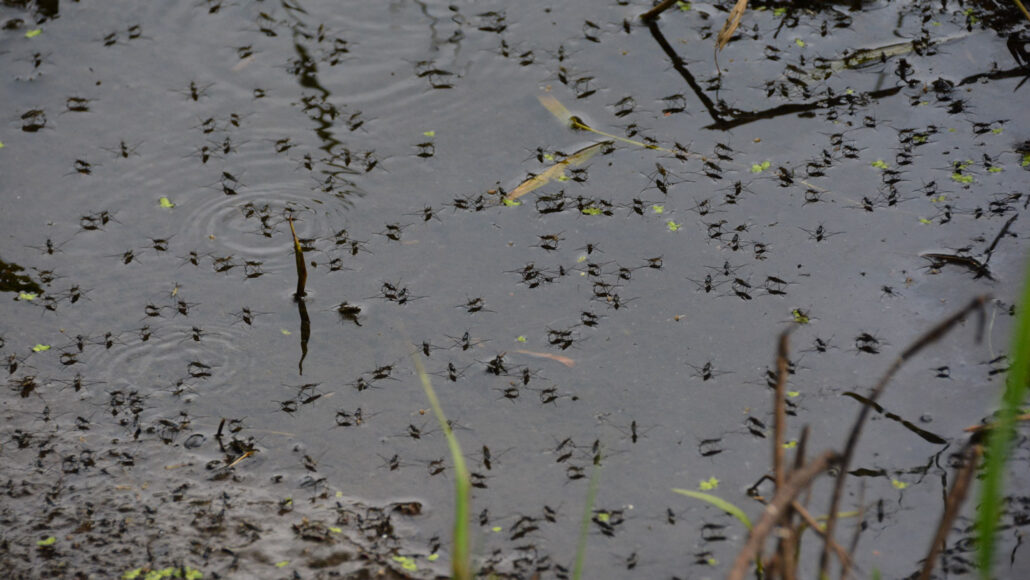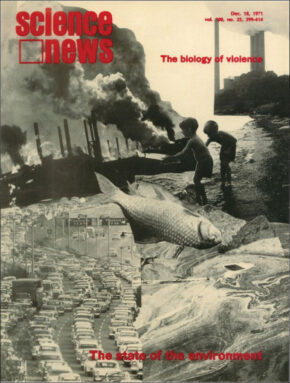A decade after scribes walked out over digital pay, The Hollywood Reporter gathers key players to reflect on the tension and "traitors," strategies and solidarity, picket-line romances and the ultimate deal that still impacts how the town runs today.

MATTHEW SIMMONS/WIREIMAGE
BY REBECCA FORD, LACEY ROSE
It was early 2006 when Damon Lindelof headed down to the Third Street Promenade in Santa Monica to see advertisements for his television series Lost, then in its second season on ABC, blanketing the Apple Store. In that moment, he was tickled by the cachet of having his sci-fi creation be among the first series to roll out on Apple products. A few hours later, however, he got what his 11-year-old refers to as the “uh-oh” feeling. “It’s when your body is telling you that something is wrong,” he explains. “People were downloading Lost and paying $1.99 an episode. … I didn’t quite make the leap to, ‘I don’t get compensated for this at all.'
A year and a half later, he would. As would 12,000 other screenwriters who joined Lindelof on picket lines in Los Angeles and New York, as the Writers Guild of America waged war on the Alliance of Motion Picture and Television Producers largely over pay for work that’s distributed via the internet, iPods, cellphones and other new media. The work stoppage — the industry’s first in nearly two decades — ultimately lasted 100 days and, according to the Milken Institute, took a $2.1 billion toll on the L.A. economy.
Now, 10 years later, THR gathers more than three dozen people involved to share their recollections of the charged period and answer the complicated question of whether it was all worth it.
On Nov. 2, 2007, after three months of negotiations, the Writers Guild announced that its members would strike if a deal was not reached by 12:01 a.m. Nov. 5.
SHAWN RYAN, THEN THE SHIELD SHOWRUNNER AND WGA NEGOTIATING COMMITTEE MEMBER The final day of negotiations was at the Sofitel Hotel. We all felt like, “We’re going to make a deal today.” But by about 3 or 4 o’clock that afternoon, it became clear to us that the other side wasn’t really interested in making a deal that day.
DAVID A. GOODMAN, THEN FAMILY GUY WRITER AND WGA BOARD MEMBER Their point of view was, “We don’t know what [the internet] is yet.” But Hulu went live [a month after] the strike ended. They knew where the business was going.
BARRY MEYER, THEN CHAIRMAN OF WARNER BROS. These new-media models were beginning to emerge. We said, “Let’s see what develops in three years. If there’s something really there, we’ll address it then.” It sounded perfectly logical to us, but there was a credibility issue that we had with the guilds because we’d made that same speech related to home video, and they had to fight for years to achieve their goals.
PATRIC VERRONE, THEN PRESIDENT OF WGA WEST It was brinkmanship. They were just going to call our bluff, and we weren’t bluffing. Next morning, we were out on strike.
STEVE LEVITAN, THEN BACK TO YOU SHOWRUNNER AND UNITED SHOWRUNNERS LEADER In past strikes, some showrunners worked as producers through the [stoppage]. But our goal was to make this one as short as possible, so anything that made the companies keep going, we felt would be detrimental. I’d worked at Leo Burnett in the ’80s, so I volunteered to do an ad with pledges from all of the biggest showrunners not to work in any capacity if we went on strike. The ad led to some showrunner meetings. Five minutes before the first big one, we were in a circle; it was Matt Weiner, me, I can’t remember who else, and someone said, “We need somebody to run this meeting.” Everybody turned and looked at me. In my mind, I thought, “Oh, fuck.”
SETH MACFARLANE, THEN FAMILY GUY SHOWRUNNER Those showrunner meetings were interesting because you didn’t have any hierarchy. It was a roomful of people who were each used to being the final voice in their respective rooms.

LORENZO DI BONAVENTURA, PRODUCER There was a total panic to get things moving as fast as we could in the hopes that the strike would not derail the movies we were putting together. For G.I. Joe, we brought on three writers and split up the script. It was really a Rubik’s Cube of trying to map out a process that I had never done before — and I have never done since.
BILLY RAY, SCREENWRITER I was doing a movie called State of Play. On the last day before the strike, everybody was arguing about the ending. I knew I couldn’t write another word starting the next morning, so I wrote 10 endings, and sent them all in and said, “Take your pick.”
KEVIN FALLS, THEN JOURNEYMAN SHOWRUNNER Journeyman was my first show on the air. I had talked Kevin McKidd, who had just finished Rome, into moving his wife and family to the U.S. from England to be the lead, and I felt responsible for now upending his life.
MARTI NOXON, THEN PRIVATE PRACTICE SHOWRUNNER I was running Private Practice with Shonda [Rhimes], and part of us was so tired that we were like, “Please, let’s have a strike.”
BEN SILVERMAN, THEN NBC CHAIRMAN I had been named chairman of NBC [five months earlier], and I remember asking [then CEO] Jeff Zucker, “What are we planning if there’s a strike?” The basic feeling there and in town was, “There’ll never be a strike.” Then bingo, it happens. The first thing hit were our late-night shows, where we built no contingency. We were super-well-positioned otherwise. I knew Biggest Loser could expand, I greenlit Phenomenon and American Gladiators. Then I came up with the idea of doing Celebrity Apprentice. I reached out to Mark Burnett, who said, “There’s no way Donald [Trump] will want to be around other celebrities. He has to be biggest celebrity.” And I said, “Actually, he’s going to be the biggest celebrity because he’s going to be the boss.” I called up Trump and he agreed, and we relaunched to huge ratings.


Hundreds and sometimes thousands of writers took to the picket lines, held daily outside the major studios in L.A. and corporate headquarters in New York.
GREG DANIELS, THEN THE OFFICE SHOWRUNNER I was the first writer to picket because I had to get to our set at 4 a.m. to try to prevent the Teamster caterers from crossing the line.
MICHAEL SCHUR, THEN THE OFFICE WRITER Steve Carell decided that if The Office couldn’t be produced with the writer-producers on set then he wasn’t going to make the show. So even though the “Dinner Party” episode was done and ready to be filmed, he just didn’t show up, and everything came to a grinding halt. The NBC lawyers and very high-powered suits pressured him like crazy, but he just calmly told them he wasn’t interested.
J.J. ABRAMS, SCREENWRITER-DIRECTOR It was ridiculous. In the morning, I’d go to picket at Paramount as a writer. Then when my call time happened, I would have to put down the signs and go in as a director and work on a movie [Star Trek] that we couldn’t rewrite because the script had to be locked.
JANE ESPENSON, THEN BATTLESTAR GALACTICA WRITER I remember young writers — aspiring writers — approaching me to walk beside me on the picket line. It’s a strange situation, to give advice about getting into a business while you’re in the process of protesting conditions within that business.
RENE BALCER, THEN LAW & ORDER SHOWRUNNER Some development guy at Fox nudged his car through the line and bumped into me. He came out yelling. The police who investigated it called it mutual combat and decided not to press charges against him. Then I turned it into an episode of Law & Order, where there was a strike and some loudmouth gets run over. Yep, I monetized my experience.
ELENA TROPP, THEN SCREENWRITER My daughter Rosie was born in August 2007, so she came with me. We thought it would be funny to make signs for her, like, “Stop milking us.” The plus of wearing your baby while you’re doing this is that a lot of people came up to us, like Mindy Kaling, who asked to take a picture with my baby. Then we were on Defamer. The headline was, like, “Strike Baby spotted!” Once we knew we had an audience, we thought, “Let’s have some more fun with it.”
NOXON People who were single kept asking for introductions to other single writers [on the picket line]. It was Tinder before Tinder.
TONY GILROY, SCREENWRITER-DIRECTOR We were looking for names to [picket]. I didn’t really know Ron Howard, but we shared an agent, so I called him and said, “Hey, man, is there any way …?” The guy was there in an hour.
RON HOWARD, DIRECTOR I was in the WGA, but I also had a production company so I wasn’t sure how they’d feel about me. They might feel my sympathy was on the other side. But I was very much welcomed.

KERRY EHRIN, THEN FRIDAY NIGHT LIGHTS WRITER I remember we were having a mother- son event at the school in my neighborhood, and this woman, who was the wife of an agent, just pointed at me: “She’s one of them!” It was funny and awful — like we were just a few steps away from the torches and pitchforks.
LEVITAN I remember at one point being at a rally where people were chanting these childish things aimed at the executives, and I’m thinking, “We’re not doing ourselves any favors here.” I just felt like it was beneath us. There was one sign that still makes me laugh, though: “Gary Newman’s wine has too many tannins.” Now, that was funny.
JOHN WELLS, SCREENWRITER AND FORMER WGA WEST PRESIDENT I remember walking the Fox picket with people chanting, “Hey, Chernin, what you earnin’?” after the executive [pay at Fox] came out, which was pretty great. I ran into [then News Corp. COO Peter] Chernin, and he thought it was fabulous, too.
ZAK PENN, SCREENWRITER My wife was a studio executive at New Line, and people were yelling at the execs as they were driving [onto the lot]. It left a bad taste in my mouth since I was sleeping with the other side.
MACFARLANE There was this animosity between showrunners who shut their shows down, like we did, and those who didn’t. But writers are so passive-aggressive, it came in the form of grumbling to each other.
Talks between the WGA and AMPTP broke down Dec. 7, after the two groups remained far apart on the key issue of new media.
MICHAEL LYNTON, THEN SONY CEO There came a moment where I was encouraged by a number of people to go visit [WGA executive director] David Young at the Writers Guild. I sat in the waiting room at the appointed time. And waited and waited. After 45 minutes, the receptionist called for the second or third time up to Young, and I could hear him say, “You should allow Mr. Lynton to wait there a while longer.” When I finally got into his office, it resulted in absolutely nothing.
LEVITAN I was really optimistic that a deal was going to happen before the holidays, and then I heard on the way to this Hanukkah dinner that [talks had broken down]. I was crushed. I get to this dinner, and [Disney CEO] Bob Iger and Michael Lynton are also there. I’m friends with those guys, and I make eye contact with them. The first moment that we could break off, the three of us walked off to a side room. I remember going, “What the fuck happened? Why can’t we solve this?”
LYNTON Running into friends who were writers in living rooms and kitchens was much more awkward than crossing a picket line.
LEVITAN Bob had this theory on what the problem was. He thought it had to do with WGA management and their negotiating tactics, and I took issue with that, but I quickly realized that they wanted to sit down and negotiate with a Hollywood insider.
VERRONE Management kept hammering, “David Young doesn’t understand the entertainment industry.” I joked that I did have to explain to him the difference between The Sopranos and The Simpsons, but other than that he understands what the entertainment industry is. They said, “We’ll meet with you if you bring in an entertainment lawyer.” So, we called in Alan Wertheimer.
ALAN WERTHEIMER, THEN OUTSIDE COUNSEL FOR THE WGA I got the call from David Young while I was at the Sundance Film Festival. I didn’t say yes right then. I knew if I got into this, I’d be out of the office for quite a while, and I needed to talk to my colleagues. What I had heard was that things had reached an impasse and that the parties didn’t like each other

As the strike threatened to drag into the new year, many late-night hosts announced they’d return, largely sans writers, as early as Jan. 2. The 65th Golden Globe Awards, slated for Jan. 13, was canceled, with the winners announced at a no-frills press conference instead.
JIMMY KIMMEL, JIMMY KIMMEL LIVE! HOST The strike basically wiped out all my savings because I was paying a lot of the staff that was out of work. That’s a big reason why I had to go back on the air. I wasn’t making a ton of money at the time, and I couldn’t afford to do it anymore. I also felt if we stayed off the air, it was going to do permanent damage to our shows.
VERRONE We decided to make a side deal with David Letterman’s company [Dec. 28] so that [The Late Show and The Late Late Show] could go back to work. That was rife with complications, not the least of which was the fact that Jay Leno’s writers suddenly said, “What about us?” But they were employed by NBC, while Letterman employed his writers directly.
STEVE BODOW, THE DAILY SHOW WRITER It wasn’t an easy time. After years of us being in battle together every day making this show, for the first time we were on the opposite side of something. Jon [Stewart] was very frustrated — he’d worked out a deal with somebody to offer the same terms Letterman had, but the deal wasn’t accepted [by the guild]. It was uncomfortable because, in general, Jon was very loyal to the writers and the writers were loyal to Jon, and this tested that.
KIMMEL For the most part, it brought a lot of us [hosts] together, especially when the CBS shows got to go back [with writers] and we didn’t. That really made everyone mad. For the record, that was not a good idea. But we were all talking. Nobody wanted to be the first back. We all wanted to go back at the same time.

JORGE CAMERA, THEN PRESIDENT OF THE HFPA We tried every which way we could [to still have the Golden Globes]. I was even told I should go chain myself to the Writers Guild and not leave until they let us have them. Once the actors joined the strike and would not cross the picket line, there was no choice for us.
SILVERMAN I got in all of this trouble because I went on the radio and said, “It’s like the guys who weren’t invited to the prom are canceling prom even though the Golden Globes have nothing to do with the strike.” I was not only furious because it was the only awards show canceled that year and the network was being leveraged horribly and hurt financially but also I was nominated for three shows [as a producer] and I wasn’t going to be in that awesome room.
On Jan. 14 , dubbed by the media “Black Monday,” the major studios axed more than 40 writer-producer overall deals, citing the “force majeure” clause, which allows a party to break a contract in the wake of an unforeseeable event. The loss of millions of dollars roiled the WGA membership, with some groups pushing for a swift end to the strike.
FALLS There was talk that the studios might force majeure writers’ overall deals, but I naively thought I wasn’t going to be one of them. Then my agent called and told me I was being “forced.” I thought he was joking. Then Jennifer Salke [then at 20th Century Fox TV] beeped in, and I knew I was a goner.
HOWARD MICHAEL GOULD, SCREENWRITER AND THEN WGA NEGOTIATING COMMITTEE MEMBER I was told that there was a group [nicknamed The Dirty 30] that had been meeting. They were concerned about the direction things had been going. They were upper-middle-class writers, and I was told they were going to go public with a statement demanding that the Writers Guild pledge, even before the DGA deal was sealed, to accept the parameters of that deal. I was given a name and a number and I called.
VERRONE To this day, I have no idea who was in The Dirty 30.
JONATHAN PRINCE, THEN CANE SHOWRUNNER Am I the only one admitting I was in it? I remember we left this one meeting and there were fliers on each of our cars that basically said, “You’re a traitor, I know who you are.”
GOULD I negotiated a sit-down. Robert King and I went to Jonathan Prince’s house. There were about three dozen of them. And they were furious. They tore into us for two hours. Our message to them was, “We know you’re hurting, but there’s nothing to be accomplished by doing what you’re going to do before the DGA makes their deal. If you do this, it will undermine the DGA’s negotiation.”
PRINCE We never undermined the negotiations. I know that in order to make any gains, there must be pain. We just thought that the pain should have been ours, the writers, it shouldn’t have been others’ to bear. And getting a bigger piece of the backend of this future technology doesn’t trickle down to [nonwriters]. How would that have helped my caterer who lost her mortgage or my greensman who had to move out of L.A.? We weren’t traitors. By day, we were walking the picket line and reporting to our strike captains; and by night, we were saying, “How do we get this thing to end?”
RAY We were really afraid that the DGA would begin to negotiate their deal while we were still out there. It was all anyone talked about: Is the DGA going to torpedo us? I reached out to a bunch of writer-directors and I invited them to my house. There was 40 of us, and we began to call ourselves “The WD-40.” We wrote the DGA asking them to stay out of their negotiations until our strike was resolved. We called people to try to get them to sign the letter. I only had one guy who basically told me to go jump in the lake — it was John Carpenter.
KEN ZIFFREN, OUTSIDE COUNSEL FOR THE DGA There was pressure put on by the Writers Guild. But the DGA firmly believed if you make a deal sufficiently ahead of time to take the pressure off of management, you’re going to make a better deal than if you stumble into it last minute, or even after a short period of strikes.
The DGA signed its new deal Jan. 17, 2008. After that, key factions within the WGA pushed aggressively for the strike to end. Both sides returned to the table in an attempt to hammer out a contract.
WELLS Once the DGA made that deal, our bargaining position was significantly reduced.
MICHAEL WINSHIP, THEN WGA EAST PRESIDENT That was a low point. God bless ’em, they got a deal, but we felt strongly that they fell on our backs.
GILROY I was very disappointed in the Directors Guild, and angry. If we could’ve pressed just a little bit further and really threatened to shut down the Academy Awards. … I would have been willing to not go to the Oscars.
AARON SORKIN, SCREENWRITER Paul Attanasio called and asked if I’d come to a meeting at his house. There were about 20 people, including a former president and a former vice president of the Guild. The DGA had just approved their contract, and people in the room who knew what they were talking about felt that the terms were the best we were going to get.
AKIVA GOLDSMAN, SCREENWRITER The emotional fuel for the strike had started to outpace the potential gains. We were sitting around [at Attanasio’s house] going, “Let’s get our hands in this in a more direct way.”
MEYER Leslie [Moonves], [Chernin], [Iger] and I met fairly regularly to talk strategy. We had a standing table at the Bel Air Hotel.
RYAN The issue was we were a group of decision-makers who were empowered to make a deal and we spent months in a room with people who weren’t — people who then had to go back to some room and call [the CEOs].
VERRONE So we said, “In exchange for us bringing Wertheimer, you’ve got to bring in CEOs.”
WERTHEIMER Once we were close to the finish line, those guys [Iger and Chernin] started showing up. Then we made some progress.

VERRONE Chernin and Iger represented the two factions of the AMPTP. Chernin was the hard-liner who represented Fox, NBC and Warner Bros. The other side was Iger, whose best interest was in making sure the Academy Awards went off in a few weeks, and Moonves, who was looking to make a deal much earlier than anybody else.
RYAN If we had been negotiating only with CBS, there never would have been a strike. It didn’t make sense for them. For a company like Fox, which didn’t have as many hours of programming and relied very heavily on American Idol at that time, they had a different perspective.
VERRONE Those final negotiations took about a day and a half. We were at the Luxe Hotel under a press blackout.
JOHN BOWMAN, WGA NEGOTIATING COMMITTEE CHAIR At the end, there was a lot of confusion about what we would settle on. I’m not sure we even knew what our bottom line was. The negotiating committee was made up largely of showrunners, and the board had a slightly more proletarian, workaday-writer feel. There was a sense that some on the board might hold out for animation or DVDs. My feeling was we needed a win, and we needed to be unified. I was getting phone calls from labor leaders all over the country throughout saying, “Labor’s taking a hit. You have to win this.” A public split would have been a disaster.
After 100 days, on Feb. 12, 2008, more than 90 percent of the WGA voted to end the strike. On Feb. 26, WGA membership approved a three-year contract, with the Writers Guild winning a piece of digital revenue.
WINSHIP I had decided to go ahead and have the [WGA East] awards because I thought it would be good for morale. It turned out to be this incredible fortuitous coincidence. We had the meeting to announce the end [of the strike], immediately followed by this party.
GOLDSMAN Our business — how deals worked, how writers worked within the system — has never been the same.
BRYAN FULLER, THEN PUSHING DAISIES SHOWRUNNER It’s no exaggeration to say there was a punitive cloud that wove across writers rooms and interactions with studios for years. There was a lot of blame going around.
TROPP I stopped writing not that much longer after the strike. It became so much harder to get jobs. Rosie’s in the fifth grade now, we live in South Carolina, and we showed her some of those old pictures from the picket line. She’s going through a social justice phase, so it was a nice entree to, “This is a union and this is what unions do. I’m sorry that at the end of that strike there wasn’t room for me writing movies anymore, but that’s OK, too.

FALLS Journeyman never got a second season. But for Kevin McKidd, I’m relieved to say, it turned into a pot of gold. The next year he started his first of 10 seasons on Grey’s Anatomy. He also learned to surf. …
VERRONE We absolutely didn’t get everything we wanted, but getting the jurisdiction in new media completely changed the way writers, actors, directors and the entire industry are employed. If we hadn’t done that, Netflix wouldn’t be what it is today, which is the company that employs something like a third of our members now.
WELLS Patric and some of the other leaders, who did a courageous job running this strike and standing up to tremendous pressure, were later punished electorally. But they were planting seeds for the future.
RYAN I don’t know that you can look at the landscape in 2018 with everything that’s playing online and not see that us caving and not winning jurisdiction over the internet would be anything other than an utter disaster for the creative community.
Additional reporting by Michael O’Connell.









